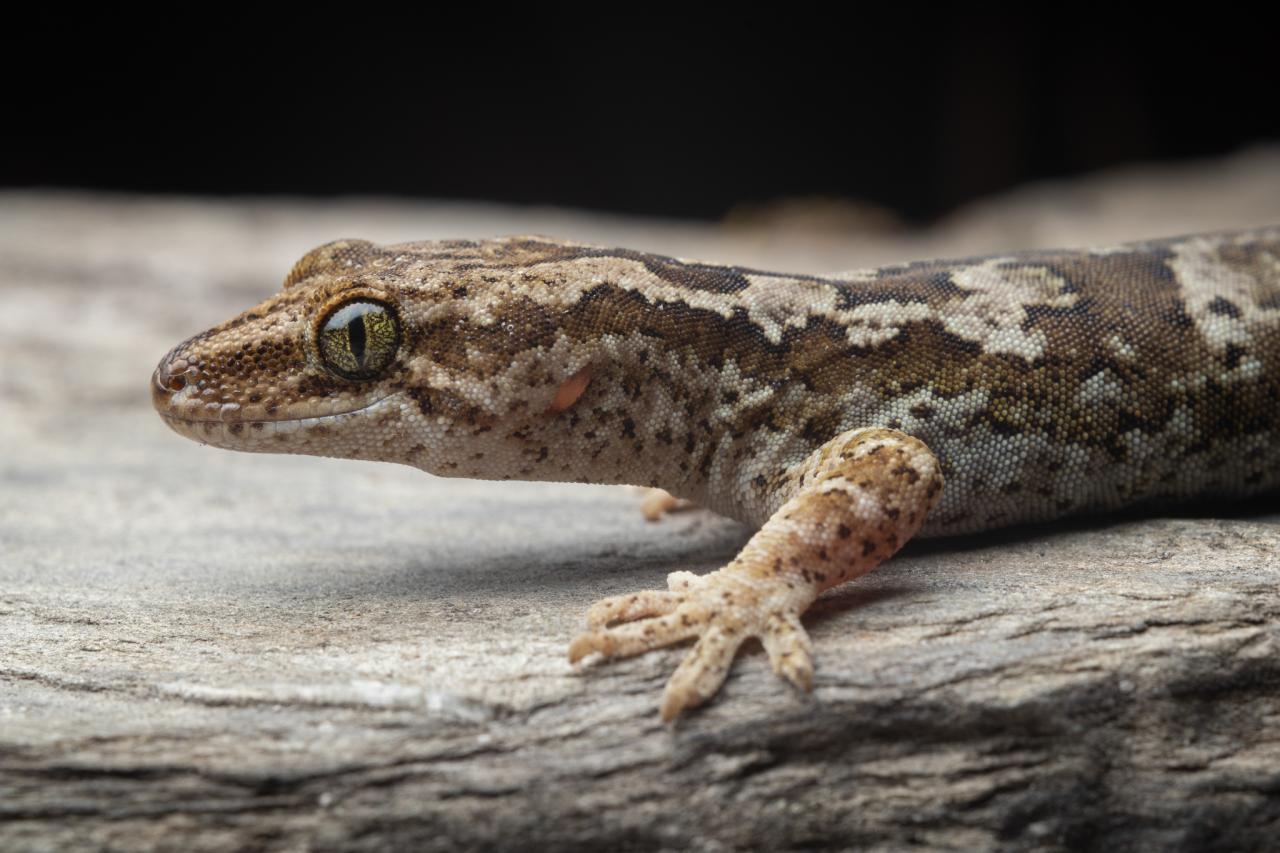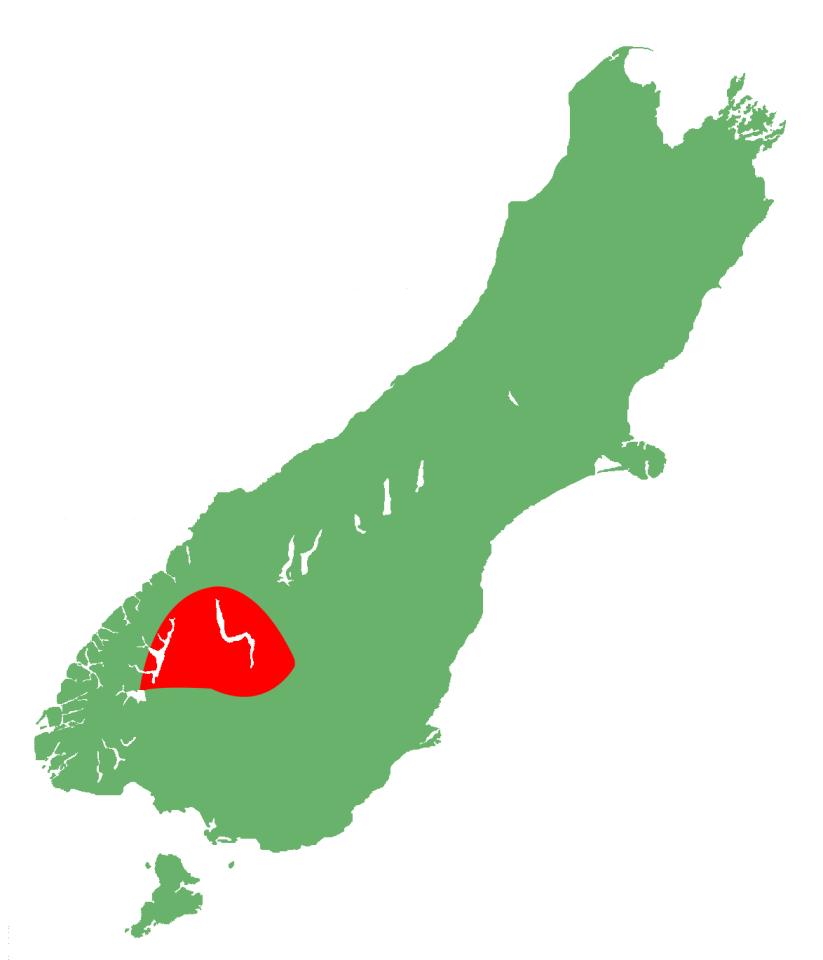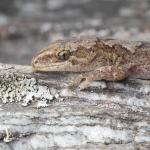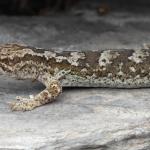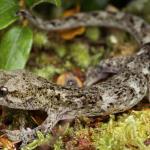- Home
- Herpetofauna Index
- Native
- Woodworthia "south-western"
Woodworthia "south-western"
Mountain beech gecko
Woodworthia "south-western"
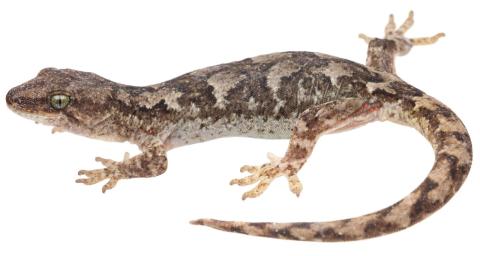
Length: SVL up to 93mm, with the tail being equal to or slightly longer than the body length
Weight: 5-15 grams
Description
The mountain beech gecko (or south-western large gecko) was previously considered synonymous with the kōrero gecko (Woodworthia "Otago/Southland large"). However, recent analyses have distinguished these two taxa due to genetic and geographic separation. Adult male mountain beech geckos also have three rows of precloacal pores extending onto their legs (vs. two in kōrero geckos). Accordingly, they are thought to be two distinct species (Hitchmough et al., 2021). Mountain beech geckos typically have pinkish brown, grey brown, or olive grey dorsal surface with paler markings. Their ventral surface is pale grey. Their mouth interior is pink with a pink tongue. Individuals from the forest are typically smaller with brighter markings than those from the alpine.
Life expectancy
Unknown, but likely to be similar to other Woodworthia e.g. up to 50+ years.
Distribution
Eastern Fiordland to the Old Man Range and around Lake Wakatipu.
Ecology and habitat
Generally nocturnal but occasionally seen basking in daylight. Primarily terrestrial and saxicolous (rock-dwelling), but is known to climb inhabit beech forest and has been found tens of metres off the ground in beech trees. Mountain beech geckos live in the lowlands, but also range up into the alpine (1300 metres a.s.l). They can be found in the scree slopes, rocky river/lake terraces, rock outcrops, and in mature forest.
Social structure
Found both solitary and communally, in population groups of up to a dozen or more.
Breeding biology
Twin viviparous offspring born late summer. Likely biennial in high altitude populations.
Diet
Likely feeds on a combination of invertebrates, nectar and seasonal fruit.
Disease
Unknown.
Conservation strategy
This species is not being actively managed. Given the common occurrence and wide range of this species, it is regarded "At Risk: Declining" (Hitchmough et al., 2021).
Interesting notes
The mountain beech gecko gets its common name from its distribution, being known to occur in proximity to beech forests in mountainous regions, whilst the TAG name refers both to its distribution in the south-western South Island, and its relatively large size in comparison to other Woodworthia in the region.
The mountain beech gecko, along with its sister taxa (the kōrero gecko and Raggedy Range geckos) sit within the Southern clade of the Woodworthia complex, with the Southern Alps gecko and greywacke gecko being their closest relatives within the group.

